In Classical Armenian, the word kenats (կենաց) meant “life.” In later periods, it came to refer to “a wish for well-being offered during a toast” or “to empty a glass while wishing someone long life during a toast” (Jeredian, Donikian, Der Khatchadourian 1992, p. 999). The renowned lexicographer Eduard Aghayan defines the word kenats as “a benevolent wish proposed in honor of someone or something during a feast or banquet; a toast, a health” (Aghayan 1976, p. 176). Also noteworthy are the derived terms kenatsachar (toast speech), kenatsanvag (music following a toast), and kenatsapar (a dance performed after a toast), which respectively mean a blessing, music following a toast, and a post-toast dance (Aghayan 1976, p. 176).
One of the earliest written references to a toast possibly belongs to Faustus of Byzantium. Describing the Persian King Shapur’s admiration for Mushegh Mamikonian’s noble act of returning the women of the harem, the historian writes: “At that time, Mushegh had a white horse. And the Persian King Shapur, when he would take a goblet of wine in hand during moments of joy and feast with his army, would say, ‘Let the white horseman drink wine.’ And he had an image of Mushegh riding the white horse engraved on a goblet, which he would place before him during feasts and repeat, ‘Let the white horseman drink wine’” (Byzantium 1968, p. 233).
However, oral tradition contains examples that point to even older historical layers, according to which the very first toast was offered by Noah. When his sons attempted to drink the juice from the grapes he had planted, Noah forbade them, fearing it might be harmful. He drank it himself to test it, so that any harm would fall on him alone. Witnessing this self-sacrificial act, his sons said to him, “Let it be gentle” (anush lini), originally anuzh lini (powerless), which later evolved into anush lini (may it be sweet) (Gyulumyan G., Fieldwork Materials, 2012). This concept is echoed in a traditional toast exchange, where the drinker declares “Life!” (kendanutyun), and the addressee responds, “Sweet immortality!” (Harutyunyan et al., 2005, p. 285).
In the Christian era, wine became symbolically equated with the blood of Christ, regarded as a sacred drink. The person offering a toast and the recipient both believed that their blessing would be fulfilled (Akinian 1921, pp. 106–107).
Another ancient formulation of the toast appears repeatedly in the Armenian national epic “Sasna Tsrer” (Daredevils of Sassoun): “Bread and wine, may the Lord preserve us!” (Hatsn u ginin, Ter kendanin)—a phrase used by heroes before confronting enemies, functioning as both oath and wish (Sasuntsi Davit 1993, p. 268).
Wine and the toast appear inseparably linked: wine-drinking was not merely celebratory but embodied promise, oath, even a vow of vengeance. This is reflected in the song dedicated to Soghomon Tehlirian, where each quatrain describing Talat Pasha’s trial and execution concludes with the refrain:
Pour wine, dear friend, pour wine,
May it be sweet for the drinkers, sweet for the drinkers.
Here, wine and the toast merge into a vow of vengeance, particularly as the act is associated with Nemesis—the Greek goddess of retribution.
In the Armenian setting, a toast could not be offered arbitrarily. A toastmaster (tamada) was first selected—often the head of the household or an elder guest, whose own toast was proposed by the host:
“Tamada jan, may your toastmastership always be for such joyful tables” (Vardumyan 1969, p. 98).
In Artsakh, it was unacceptable for someone to offer a toast independently without permission from the tamada. Such an act was considered disrespectful, and the tamada could express offense publicly. Proper etiquette required that one first request permission from the tamada, who could either grant or deny the right to speak. Interrupting a toast—especially the tamada’s—was deemed a serious insult and could provoke conflict.
Armenian toasts exhibit fascinating variety. The first is typically dedicated to the meeting itself, known as the baré tésutyun (joyful encounter) toast, which effectively marks the opening of the banquet:
“Welcome, you have a place above our heads. Eat, drink, enjoy, and may the thorn in your foot be in my eye” (Gyulumyan G., Fieldwork Materials, 2012).
This was usually offered by the host to the guests, particularly honored individuals. Convention dictated that the recipient of a toast stand first and sit last, after everyone had emptied their cups.
As the banquet progressed, the toasts would evolve according to its context, encompassing all stages of life—birth, youth, marriage, parenthood, and death. These toasts, often grouped thematically, unfolded in a sequence reflecting key life events—whether joyous or tragic. For instance, toasts to newborns conveyed poetic blessings:
“May their path be long,” “May their hair be as white as an egg,” “May their beard turn to snow” (Gyulumyan G., Fieldwork Materials, 2016).
From Trabzon, we have beautiful wedding toasts:
“May you bloom and flourish, grow old on one pillow, and live to see your grandchildren and great-grandchildren blossom—don’t forget us” (Yalanuzyan 1981, p. 82).
“Be as a flower—always blooming; be as sugar—always sweet; learn from your elders, teach your young” (Yalanuzyan 1981, p. 82).
“Bloom like a rose, sing like a nightingale, remain youthful in spirit and loving in age” (Yalanuzyan 1981, p. 82).
“Blossom, form bouquets, become a fruitful tree” (Minasean 1988, p. 239).
Toasts directed at youth combined well-wishes and moral counsel, often presented through allegorical stories culminating in a succinct toast:
“Be well, be upright, may God prolong your journey, love one another—in the light and beneath it. Be respected and respectful on all sides” (Yalanuzyan 1981, p. 82).
Such toasts often transcended Armenia, spreading across the Soviet Union:
“To the youth of the Soviet country—let us toast the Komsomol army of millions of boys and girls” (Vardumyan 1969, p. 197).
“May all your endeavors succeed—may this toast be to your health and success!” (Vardumyan 1969, p. 197).
Many toasts were general and personal:
“To your humanity, may your dear health be toasted, with your family, your children” (Vardumyan 1969, p. 198).
Peace-themed toasts were ubiquitous on Armenian tables—particularly significant for a war-torn nation:
“Let us toast world peace, for it was the great Russian people who saved our Armenians from the Muslim bloodthirsty executioners. Our forefathers willed that we never let go of the Russian savior’s hem” (Vardumyan 1969, p. 199).
Yet peace toasts could also express aspirations for victory:
“Let there be peace in the world—but if there is war, let us be the victors, for we are in the right” (Gyulumyan G., Fieldwork Materials, 2018).
Toasts to national heroes who died for Armenian freedom are also common, transforming the toast into a form of remembrance, transmitting memory to future generations.
Armenian tables featured festival-related toasts as well—on New Year’s Day (“May the New Year bring new successes”), on Army Day, Women’s Day, Easter, and so on (Gyulumyan, Fieldwork Materials, 2012). Some toasts reflected philosophical and existential musings:
“Don’t forget death—it awaits us all. I wish we suffer no untimely losses, only timely ones” (Vardumyan 1969, p. 200).
“I hope that when your time comes, everyone will say, ‘God rest your soul; what a pity for such a good person’” (Vardumyan 1969, p. 200).
The final toast at a banquet was always for the household. It summarized the entire celebration and honored the host:
“To the hearth, health and blessings. May even greater feasts be held in this household” (Vardumyan 1969, p. 197).
Thus, the toast (kenats) is a central element of Armenian wine-drinking culture, combining wine, speech, and ritual. Its ancient roots reveal that it is not merely a festive formality but a cultural code of blessing, oath, and even obligation—transmitted across generations. Wine functions as the sacred fluid that seals the toast, while the tamada ensures that tradition is upheld and blessings are delivered properly.
For Armenians, the toast is not just a phonetic or graphic tradition—it is a living ritual that fuses history, language, and collective memory. By preserving its traditional rules while adapting them to modern life, we safeguard and pass on a vital layer of cultural identity.
References (in English)
Akinian, N. (1921). Five Wandering Ashughs: Minas the Scribe of Tokat. National Library, Vol. XLII. Vienna: Mekhitarist Press.
Aghayan, E. (1976). Explanatory Dictionary of Modern Armenian, Vol. 1. Yerevan: Hayastan Publishing House.
Faustus of Byzantium. (1968). History of the Armenians. Yerevan: Hayastan Publishing House.
Harutyunyan, S., Kalantaryan, A., Petrosyan, G., Sargsyan, G., Melkonyan, G., Hobosyan, S., Avetisyan, P., & Gasparyan, B. (2005). Wine in Armenian Traditional Culture. Yerevan: Center for Agribusiness and Rural Development; Institute of Archaeology and Ethnography, NAS RA.
Cherefjian, G. (Archbishop), Donikian, K., & Ter Khachaturian, A. (1992). New Dictionary of the Armenian Language, Vol. 1. Beirut: K. Donikian & Sons Publishing House.
Minasyan, Kh. (1988). Village Speech and Expression (Peria Region). New Julfa: Printing House of the St. Savior Monastery.
The Daredevils of Sassoun: Collected Text. (1993). Compiled and edited by Grigor Grigoryan. Yerevan: Armenian Academy of Sciences Publishing House.
Vardumyan, B. (1969). The Village of Vagharshapat: Toasts. Archive of the Institute of Archaeology and Ethnography, Entry No. 2.
Yalanuzyan, A. (1981). Folktales, Stories, Songs, Proverbs, and Dictionary of Jhenik (Trabzon). Archive of the Institute of Archaeology and Ethnography.
Gyulumyan, G. (2012, 2016, 2018). Fieldwork Materials (DAN). Institute of Archaeology and Ethnography, NAS RA.
Gevorg Gyulumyan



 +374 44 60 22 22
+374 44 60 22 22
 Armenia Wine Company 3 Bild., 1Dead-end, 30 Street, Sasunik 0223
Armenia Wine Company 3 Bild., 1Dead-end, 30 Street, Sasunik 0223

